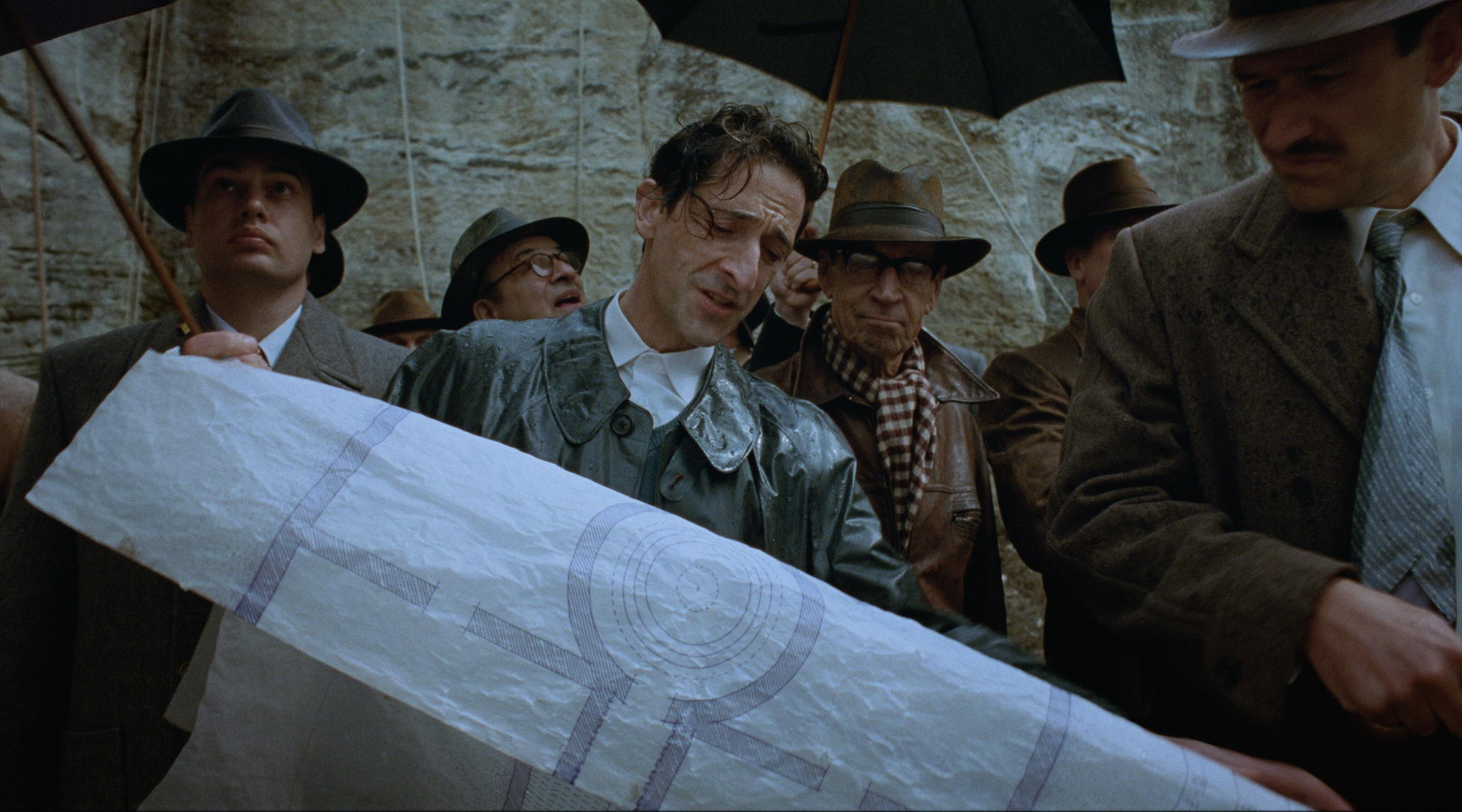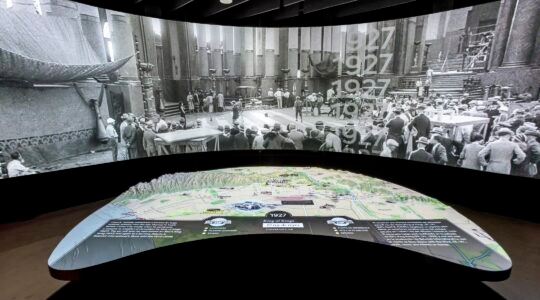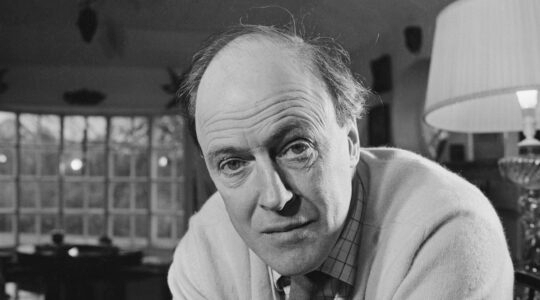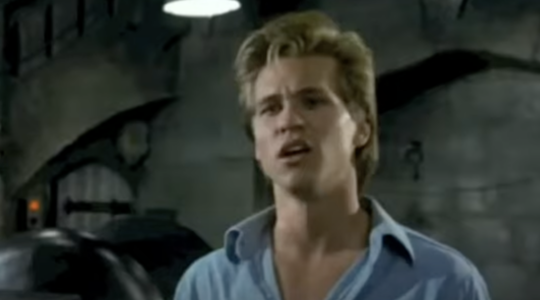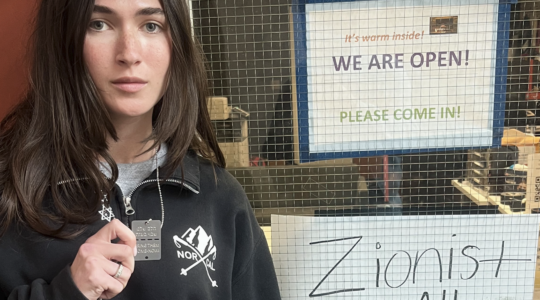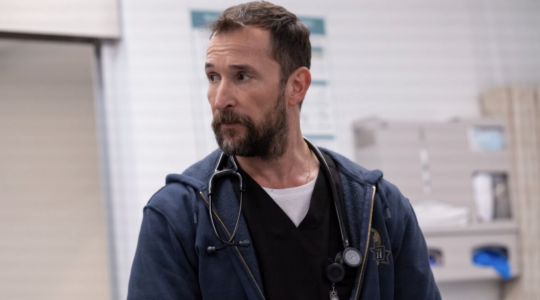The famed architect Louis Kahn made little effort to live Jewishly in his life, yet throughout the 20th century he designed synagogues and famous Holocaust memorials across the country.
The Hungarian Jewish designer Marcel Breuer, educated at the Bauhaus school, was forced to renounce his Judaism while he lived in Germany. Later he wowed Americans with his striking brutalist designs — until the tides shifted, and his buildings became some of the nation’s most reviled.
Neither Kahn nor Breuer are mentioned by name in the new movie “The Brutalist,” which follows a Holocaust survivor and acclaimed architect as he attempts to complete a monumental structure in suburban Philadelphia. Yet the movie tells their story, as well as that of other prominent Jewish architects and designers of the 20th century, many of whose biographical details informed the journey of the movie’s fictional hero, László Tóth, played by Adrien Brody.
The film’s 36-year-old director, Brady Corbet, says he drew heavily from Kahn, Breuer and other Jewish designers in crafting his story. Yet he claims he didn’t set out to make a Jewish movie, just one about architecture.
“The film could take place at any time and be about someone from anywhere,” Corbet told a crowd at the Chicago International Film Festival following a screening of the film in October, when an audience member asked him specifically about the movie’s Jewish content. “Because the characters are Eastern European Jews, it was important for us to get the details right.”
Corbet, who co-wrote the screenplay with his partner Mona Fastvold, said he was fascinated by brutalism in particular — a popular, yet polarizing, mid-century architectural movement that prioritizes large, rough surfaces and raw concrete exposure.
Why brutalism? Because governments all over the world have ordered such buildings destroyed soon after taking power; the buildings were, to him, an effective metaphor for unwanted groups of people who had once gained some degree of societal prominence. In short, he said, “so many people hated it.”
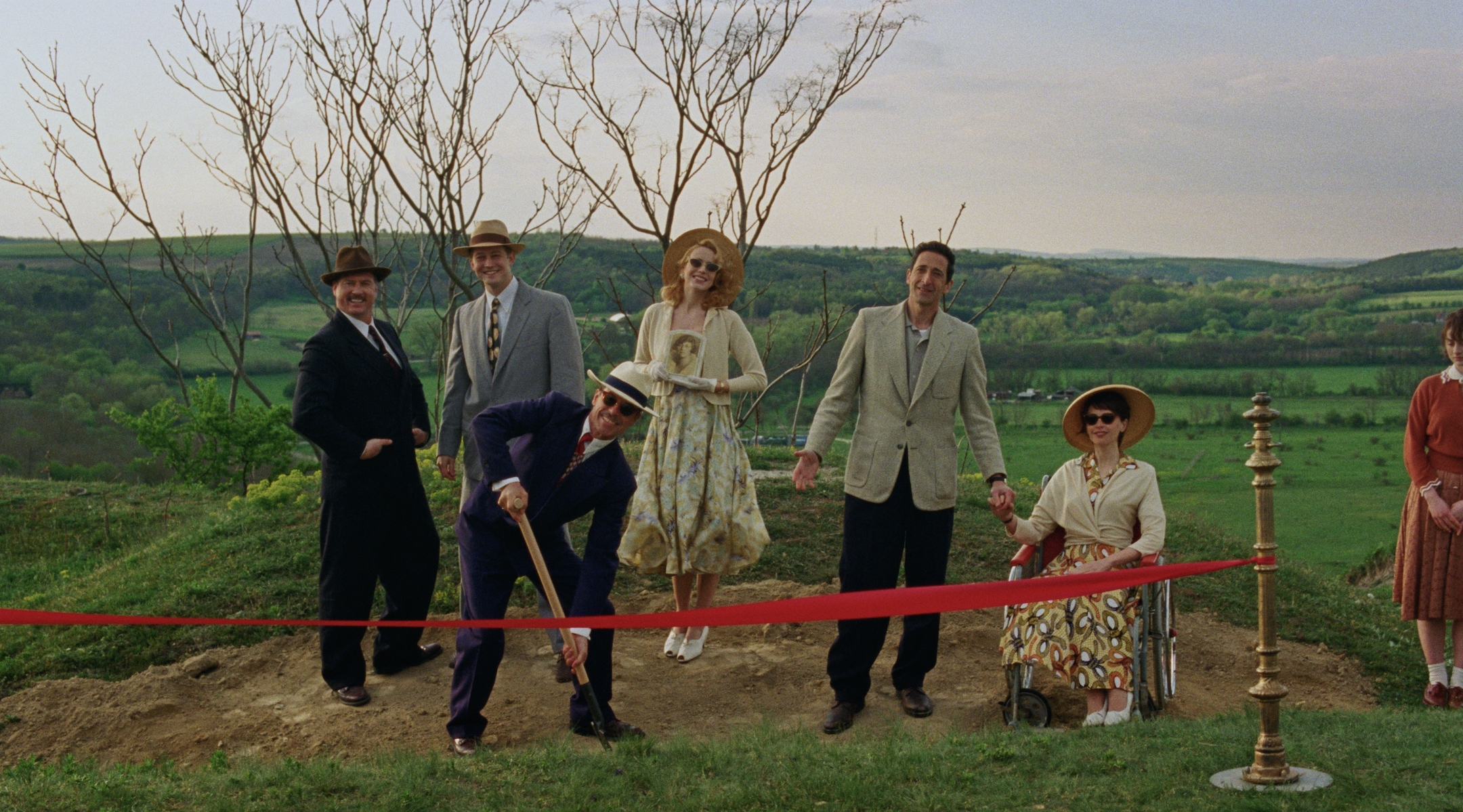
Guy Pearce (front), Adrien Brody and Felicity Jones in a scene from “The Brutalist.” (Lol Crowley/A24)
But hardly anyone is hating “The Brutalist.” The film premiered at the Venice Film Festival this fall, where it won the best director prize — considered a runner-up to the prestigious Golden Lion award. Recently it also scored the best film and best actor awards from the New York and Chicago film critics groups, and racked up a stack of Golden Globe nominations. Hollywood trades expect the film to be a top Oscar contender, especially Brody, who performs much of his dialogue in Hungarian and whose accolades come two decades after the Jewish actor won an Oscar for portraying another artistic Holocaust survivor in “The Pianist.”
The accolades are notable for several reasons. The film has an epic, three-and-a-half-hour runtime, including an intermission — the kind of length that, while befitting the scope and theme of a story about an uncompromising artist, could turn theatergoers off. (The title card that appears onscreen during the intermission is a photo of László’s wedding in prewar Hungary, with a smiling, happy Jewish family posing under their synagogue door’s Hebrew lettering, presented as documentation to help bring his surviving family over to the United States.)
It also might be difficult to find a theater that’s playing it in the manner Corbet intends the film to be seen: To evoke the time period, he shot it on VistaVision, a now-dead film format known for a giant field of vision and hyper-detailed focus, and has encouraged viewers to seek out the small number of theaters equipped to show the movie on 35mm or 70mm prints.
Then there’s the subject matter itself, which, during a time of immense fear and uncertainty for Jewish Americans, unapologetically tackles the Holocaust; antisemitism; the hazards Jews faced emigrating to the United States; Jews being pushed out of elite society across the globe; and debates about the early years of Zionism. Early in the film, László learns that a Jewish cousin has tried to remake himself as a gentile; later, after a series of setbacks in America, one of his family members encourages him to move to Israel.
(The film joins a deep crop of Jewish-interest movies this awards season, including Jesse Eisenberg’s Holocaust dramedy “A Real Pain”; “September 5,” a controversial docudrama about the 1972 Munich Olympics massacre of Israeli athletes; “The Order,” a fact-based thriller about the 1984 murder of a Jewish radio host by white nationalists; and the Bob Dylan biopic “A Complete Unknown.”)
After initially agreeing to a Jewish Telegraphic Agency interview, a representative for A24, the film’s distributor, canceled planned conversations with Corbet, Fastvold and several members of the film’s production team the day before it was scheduled. A24 was unable to accommodate requests to reschedule the interviews in time.
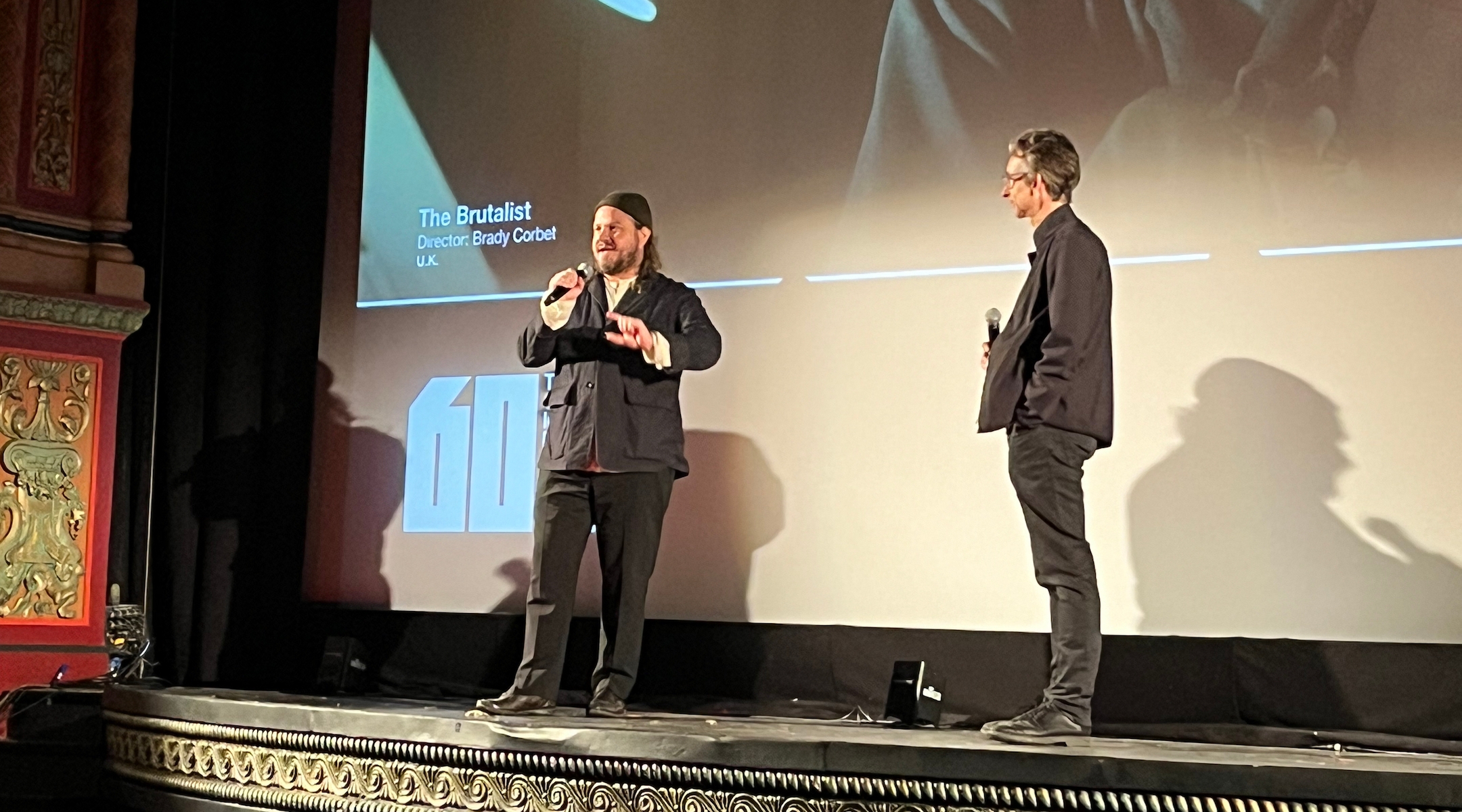
“The Brutalist” writer-director Brady Corbet (left) introduces a screening of the film at the Chicago International Film Festival with festival senior programmer Anthony Kaufman, Chicago, Illinois, Oct. 24, 2024. (Andrew Lapin/JTA)
But in Chicago promoting the film two months earlier, Corbet — a former actor whose directorial debut, “The Childhood of a Leader,” was a parable of Hitler’s early years — told the sold-out crowd what drew him to the subject matter.
“I was sort of fascinated by the way that people, communities, tend to perceive anything which is unfamiliar to them,” he said, referencing both “a new building that’s been erected in a different style” and “a new member of their community that has different traditions, different heritage, different skin color.”
When the Nazis took power, he pointed out, they shut down the Bauhaus design school in Germany, where the ideas behind brutalism originated and where many prominent Jewish architects — including, in the movie, László — were taught.
The changing tides against brutalism took place as Jewish American architects frequently found themselves drawing on the memory of the Holocaust in their postwar work, according to the 2011 history book “Building After Auschwitz: Jewish Architecture and the Memory of the Holocaust,” by Gavriel D. Rosenfeld.
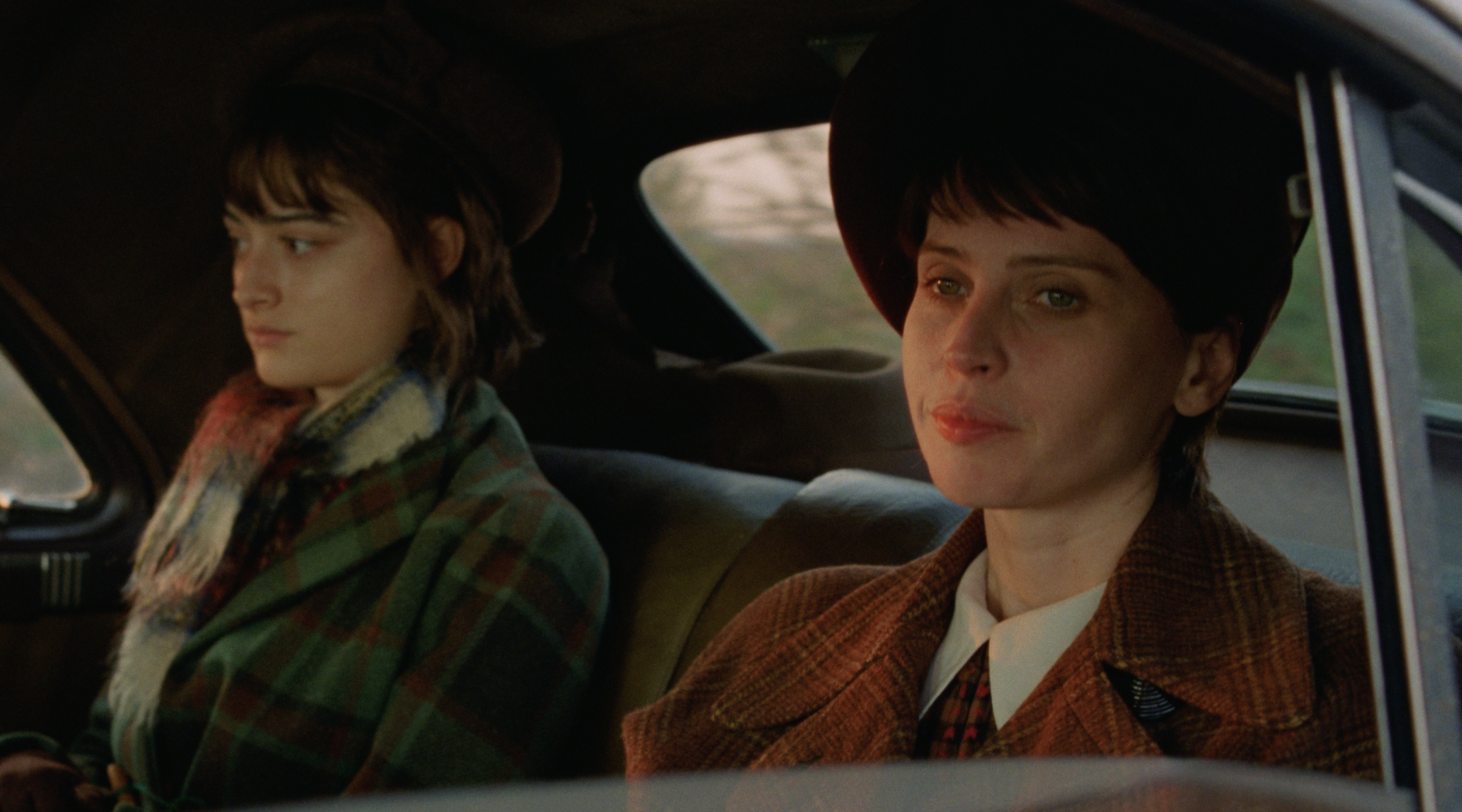
Felicity Jones (right) and Raffey Cassidy in a scene from “The Brutalist.” (Lol Crowley/A24)
But the film isn’t only about the Holocaust. László, his wife Erzsébet (Felicity Jones) and their niece Zsófia (Raffey Cassidy), both before and after reuniting in America, must also come to terms with what it means to be Jewish in their adopted country.
Their new home seems rife with antisemitism, even when it has a nice facade — as in their wealthy industrialist benefactor, Harrison Lee Van Buren (Guy Pearce), who hires László to construct a community center (complete with church) and at least outwardly seems to admire and befriend him. But there’s a sinister side to Harrison and his family, one that comes out in drips and drabs (“We tolerate you,” his son sneers, out of earshot) before the mask falls away completely in the film’s appropriately brutal third act.
This dynamic, in which the Jewish characters try to parse whether the pleasantries they exchange with their non-Jewish benefactors are undergirded by antisemitism, will be familiar to many Jews navigating public spaces in the present day. And it also has a real-world parallel in comments made by some of the film’s cast. Pearce has become one of Hollywood’s most outspoken pro-Palestinian advocates since the outbreak of the Israel-Hamas war, and recently told Vanity Fair, “I’ve had someone say to me, ‘Let’s not forget what Hollywood is made up of. Be careful.'” (He declined to clarify his remarks when asked by the magazine.)
For Corbet, this uncomfortable relationship between the characters was more universal.
“If anyone is being totally transparent about the relationship they have with someone that they feel beholden to, you’re never on equal footing,” he said in Chicago. “If you want it for the good of your project, you sometimes have to dabble in moral and ethical situations which are not your own … I know many of you have probably been in that situation: like to keep a job, you have to laugh at your bigoted boss’s jokes. It’s a complicated dynamic.”
He also said that László, who is spotted a few times in synagogue in the movie, isn’t a particularly religious Jew. “I don’t know very many devoutly religious artists,” Corbet mused. “It’s almost like they don’t have space for it. It requires a level of obsession which doesn’t create a lot of space for anything else in one’s life.”
Yet the film itself certainly makes space for different shades of Judaism, right up until its epilogue — which contains a twist, packed into a few quick lines of dialogue, that seeks to explain so much of László’s life’s work. A small gesture hidden inside something big — that, for Corbet, is his film’s subject in a nutshell.
“These monuments all over the world, Chicago, Lithuania, New York, Israel, you name it, they’re so radical. They’re so extreme,” he said. “And I identify with that way of working. I, too, like extremes. I like minimalism. I like maximalism. And for me, brutalism is both.”
JTA has documented Jewish history in real-time for over a century. Keep our journalism strong by joining us in supporting independent, award-winning reporting.
